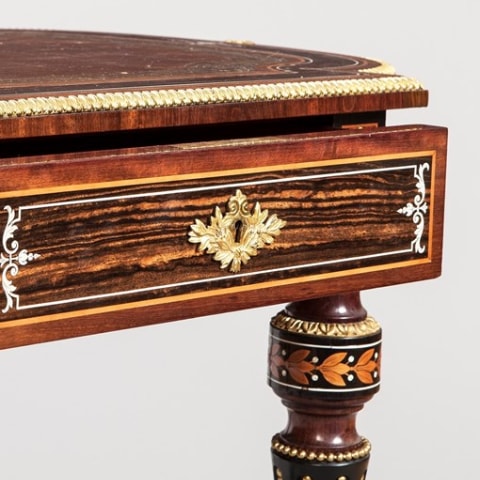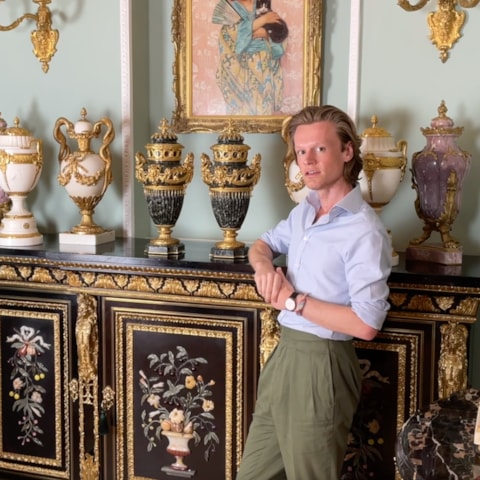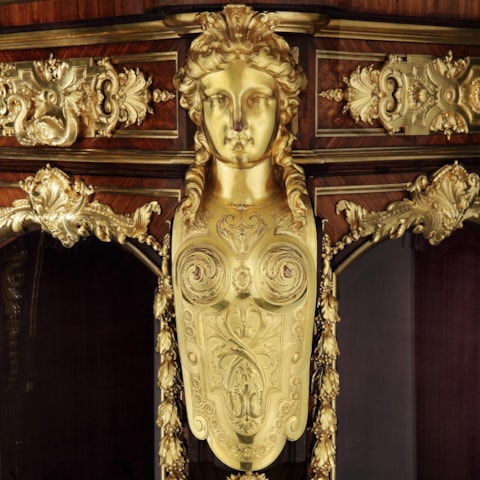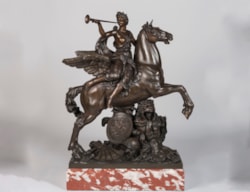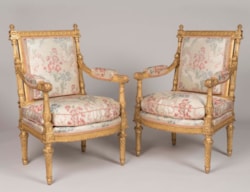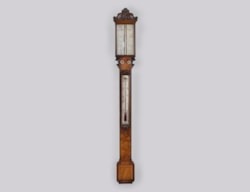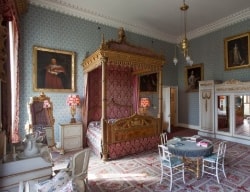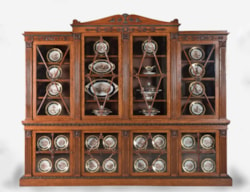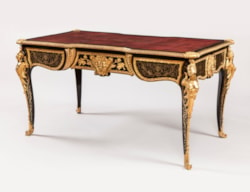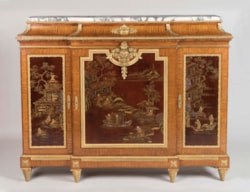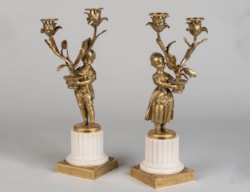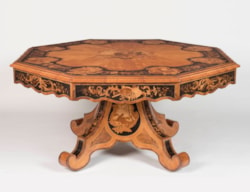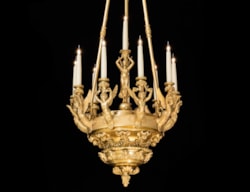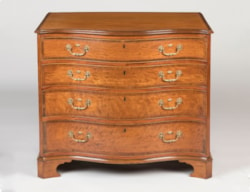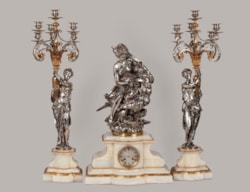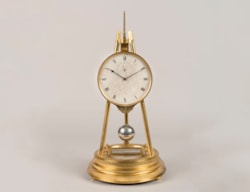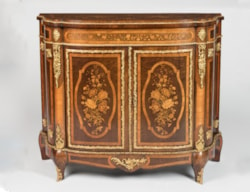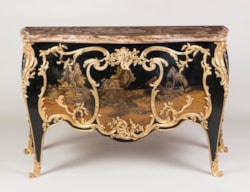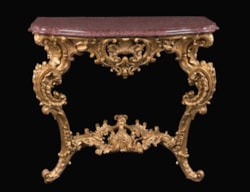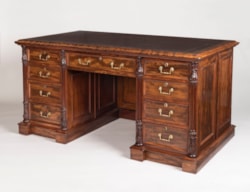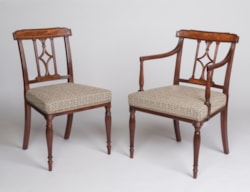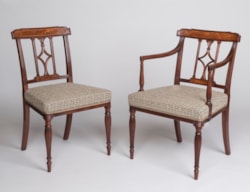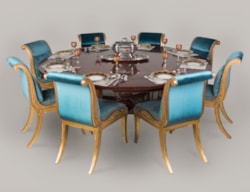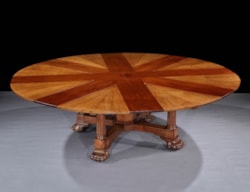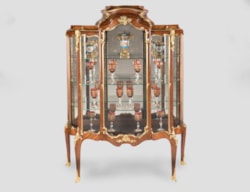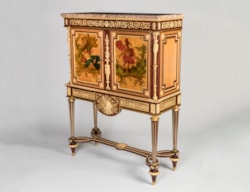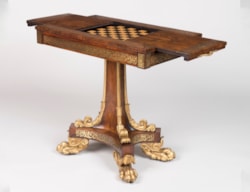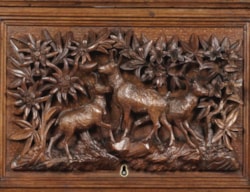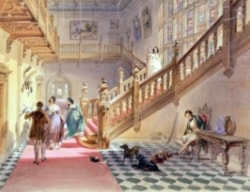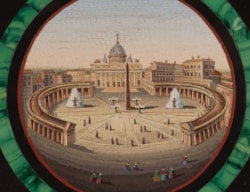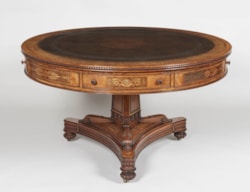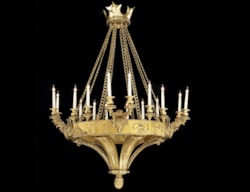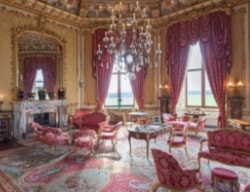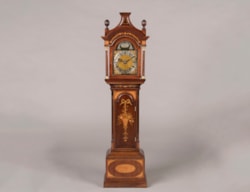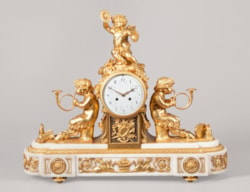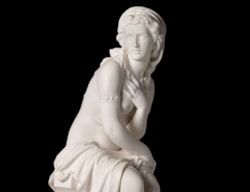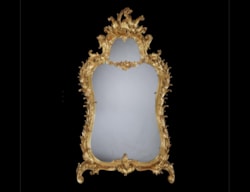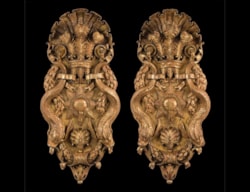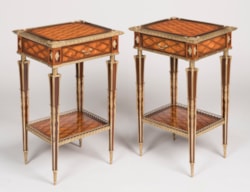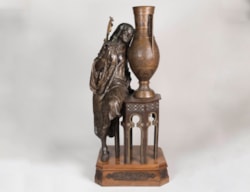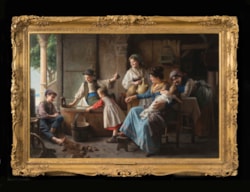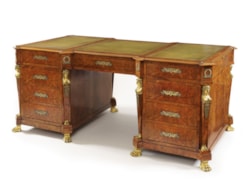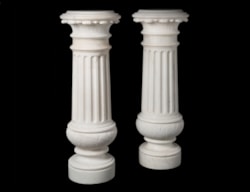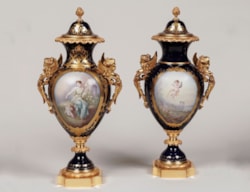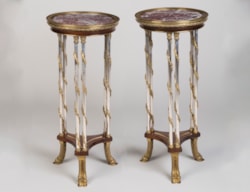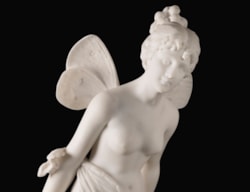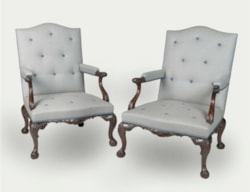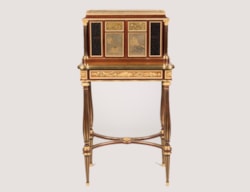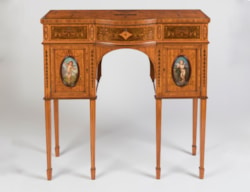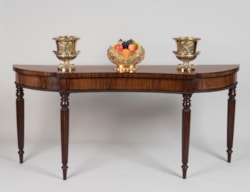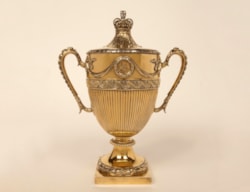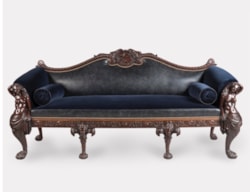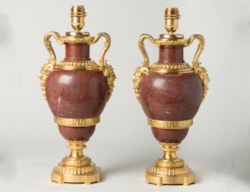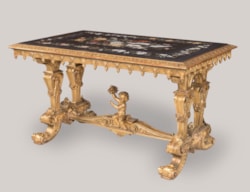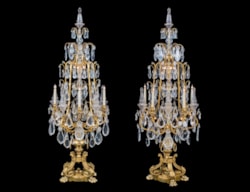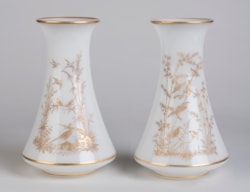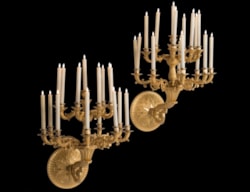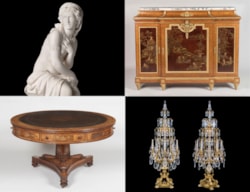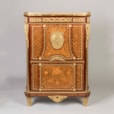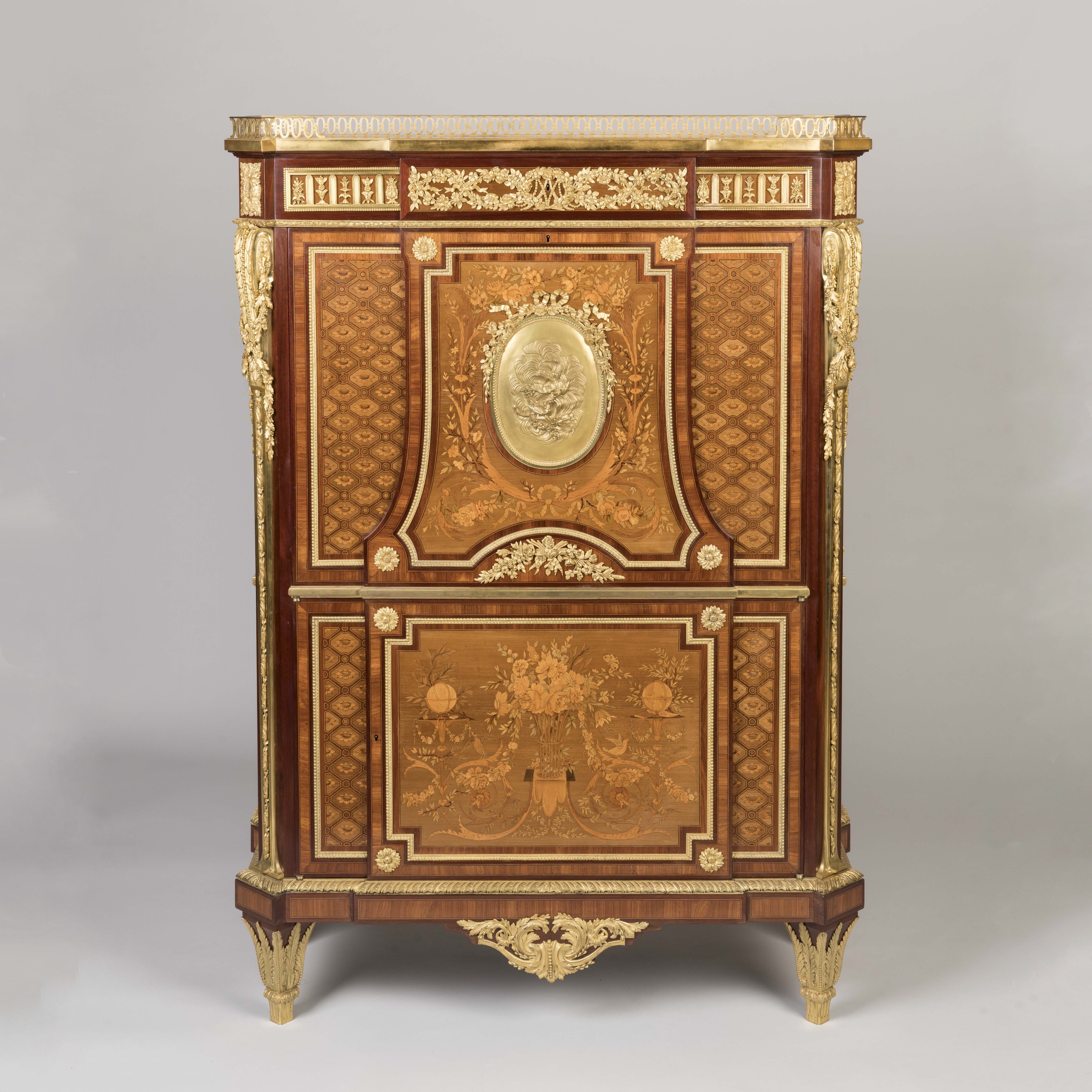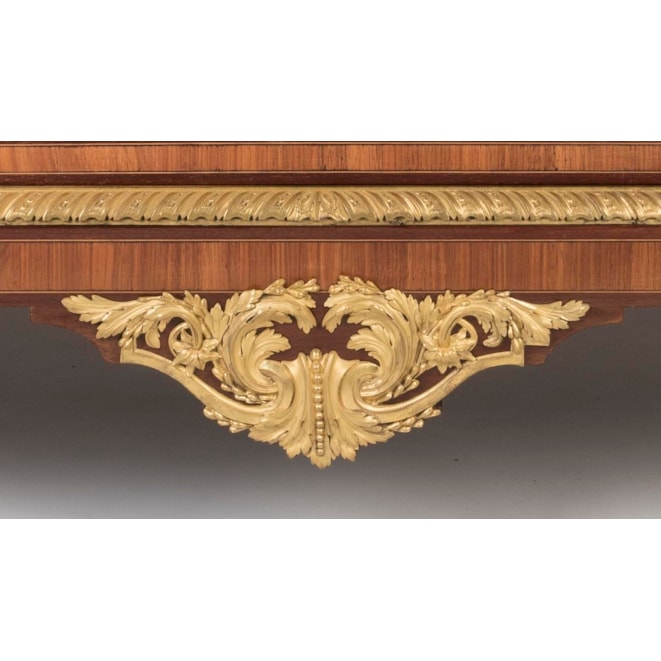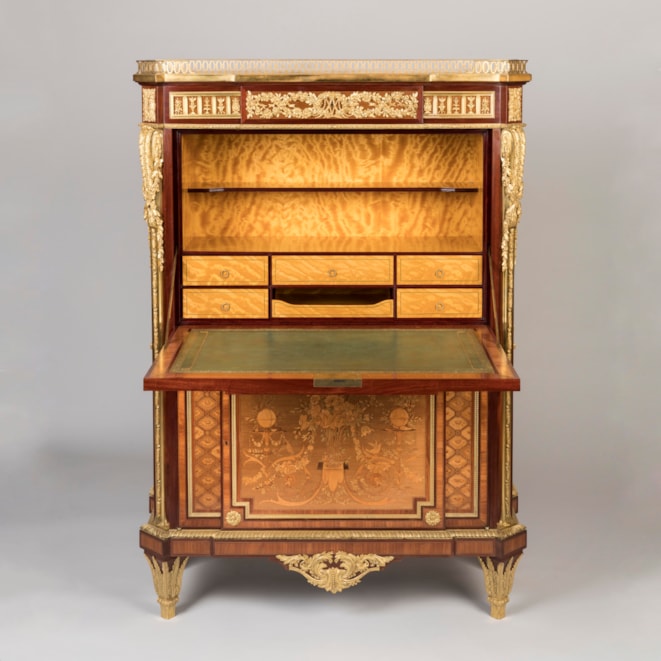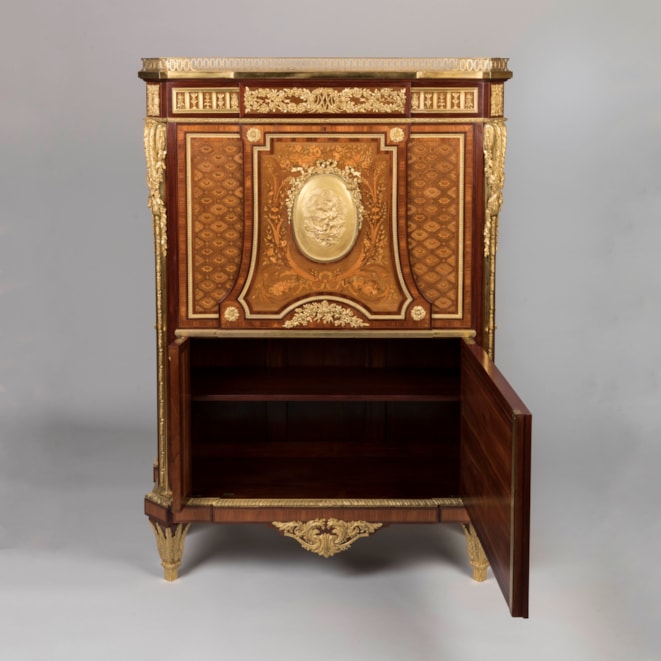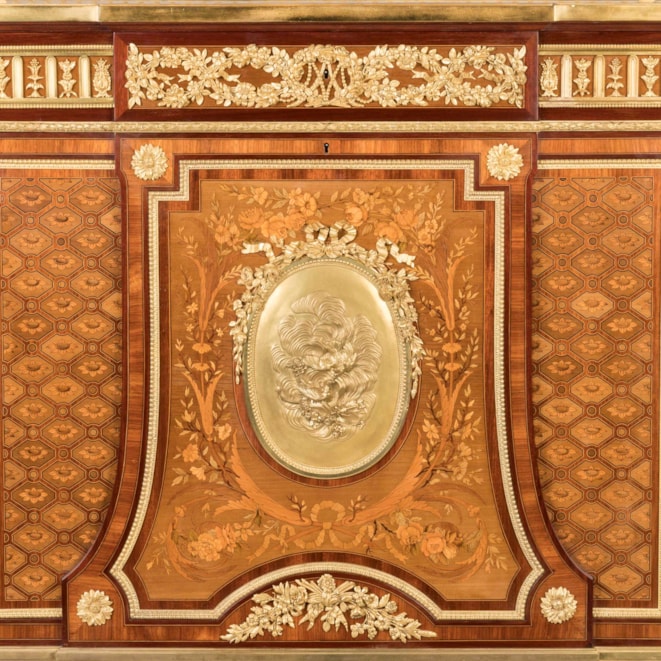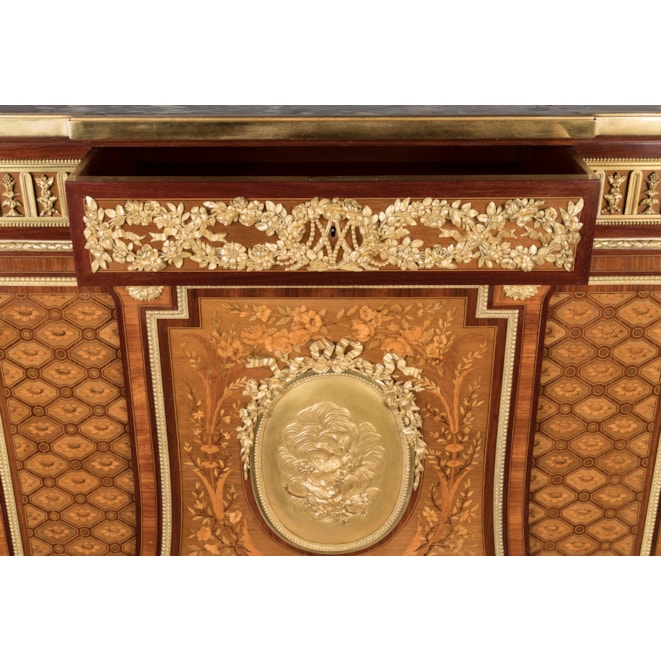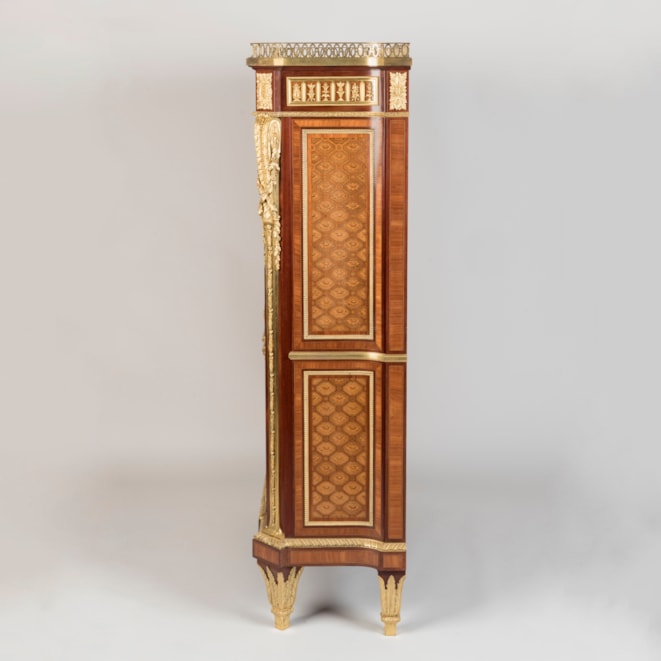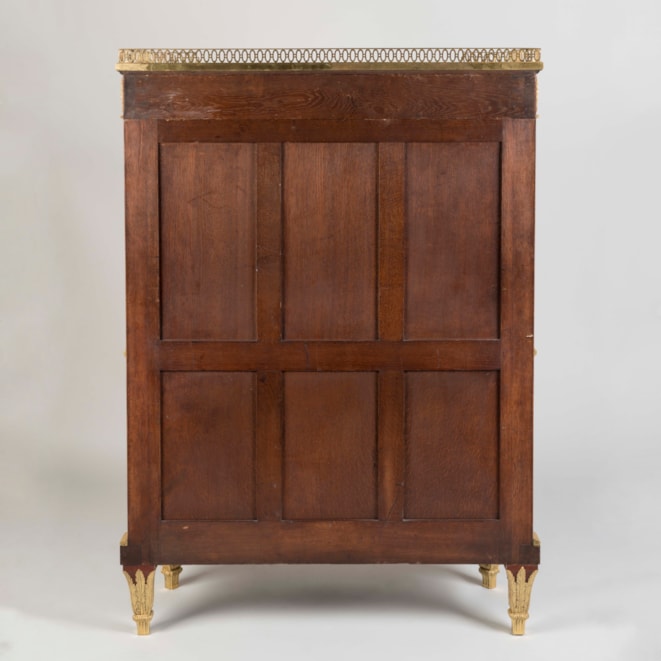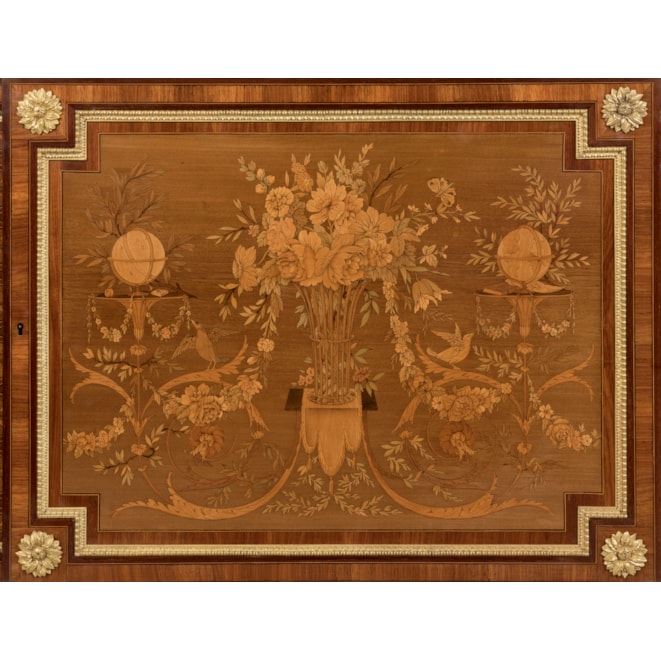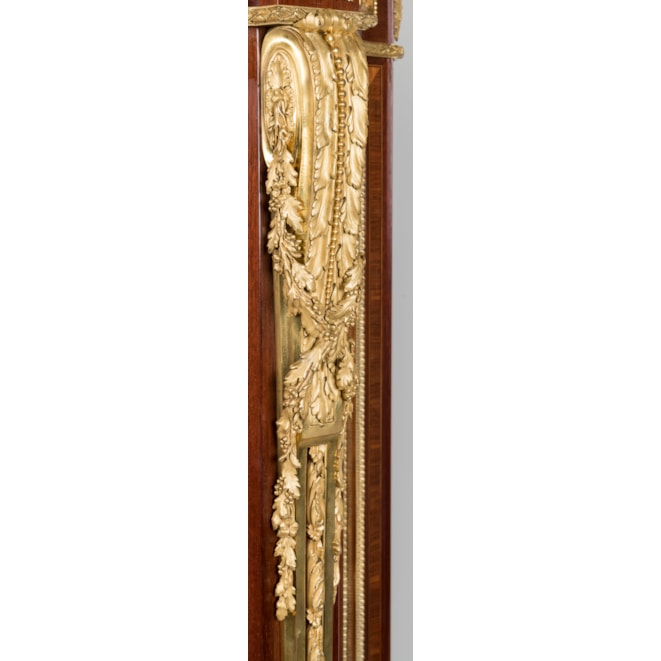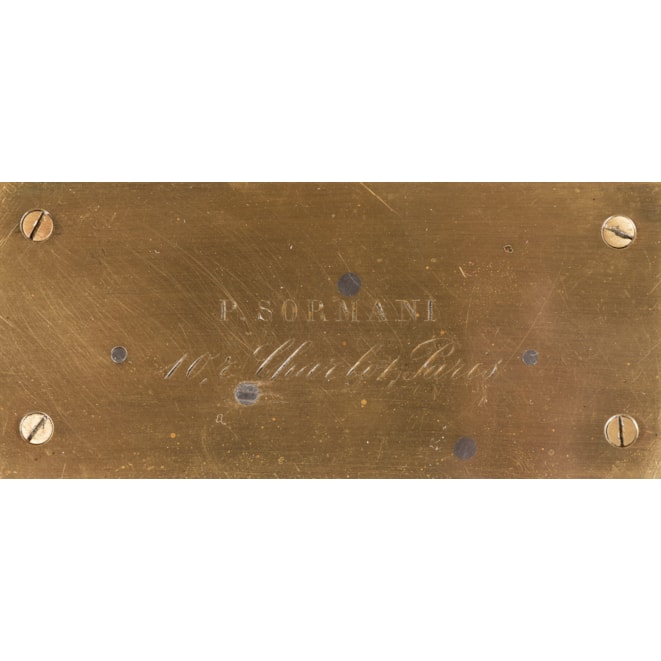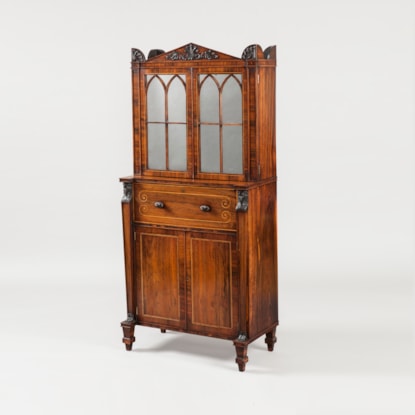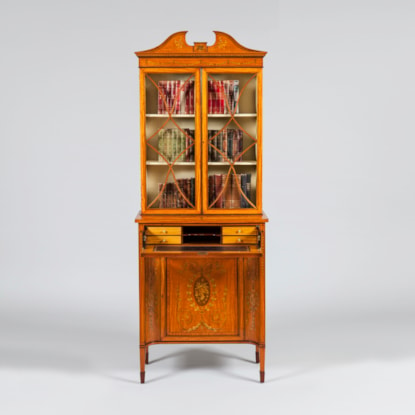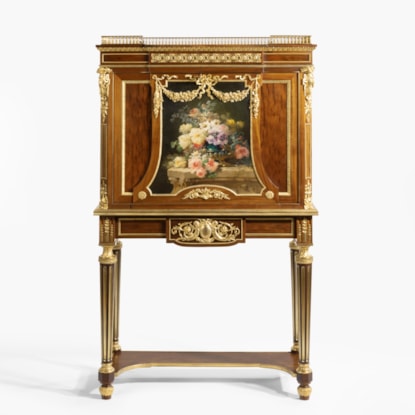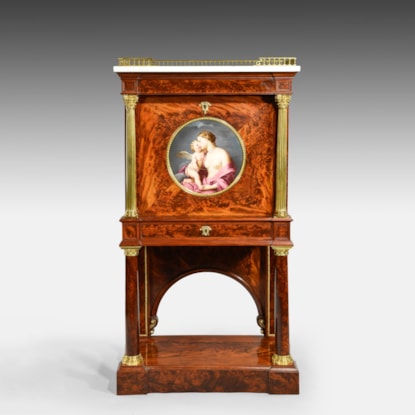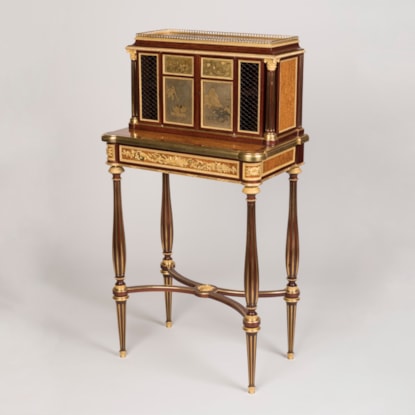Collection / Desks & Writing Furniture / Secretaires & Escritoires
An Exceptionally Rare Secrétaire à Abattant By Paul Sormani of Paris
An Exceptionally Rare Secrétaire à Abattant By Paul Sormani of Paris
Dimensions: H: 60 in / 153 cm | W: 42.5 in / 108 cm | D: 16.5 in / 42 cm
An Exceptionally Rare Secrétaire à Abattant
After the designs of Jean-Henri Riesener for Marie Antoinette
By Paul Sormani of Paris
*Additional Literature Available*
Of upright rectangular form with canted corners and slight breakfront profile, veneered with panels of marquetry executed in various woods and with panels of tulip wood banding and boxwood stringing, all bordered by amaranth, exuberantly dressed with gilt bronze mounts of the highest quality, and having a fleur de pêcher marble top within a plain ormolu band surmounted by a three-quarter pierced gallery. Rising from tapering feet shod with acanthus cast sabots, the lower apron with a strong gilt bronze mount of scrolling foliates; the lower section housing a cupboard behind two panels which together present a symmetrical marquetry composition of scrolling vines that support a draped pedestal with a tall basket overflowing with fruit and flowers at center and a garlanded stand at either side, the left with emblems of Astronomy and the right emblems of Geography; within ormolu cast borders and flanked by Riesener's famous trellis marquetry panels which also adorn the sides of the secretaire. Above, the fall-front panels defined by a trapezoidal marquetry composition of flowers, fruit, and scrolling vines centred on an oval reserve for the principal bronze mount; the marquetry design consisting of two leafy vines, ribbon-tied where they meet, and terminating above in a floral arrangement. The oval relief bronze plaque representing two billing doves against a background of swirling clouds, with Cupid's bow and quiver and a floral garland visible. The interior with a leather writing surface, compartments beautifully veneered in bois citronnier with amaranth banding; an arrangement of two shelves and six drawers. The canted front angles are pilasters, mounted with gilt bronze spandrels, cast as stiff leafed acanthus, having attached sprigs of oak leaves, berries and intertwined forget-me-nots, all within a gilt bronze stepped band. The frieze drawer mounted with a gilt bronze garland of roses, pinks, convolvulus, lilies-of-the-valley, asters and other flowers forming five complete loops, the central one enclosing the initials 'MA' for Marie Antoinette. The lockplate signed by the maker and including his Rue Charlot address, where the firm was located post-1867.
French, circa 1870
Renowned Parisian cabinetmaker Paul Sormani took on the task of creating this splendid secretaire, inspired by the masterpieces of Jean-Henri Riesener. Sormani's atelier, known for its exquisite craftsmanship and attention to detail, combined the best aspects of two known famous secretaires made for Queen Marie Antoinette of France.
The first cabinet, together with a commode today in the Metropolitan Museum of Art, are “often described as the most famous pieces of eighteenth-century French furniture outside France.” They were made in 1783 for Versailles, and incorporated lacquer panels alongside opulent bronze mounts. Eventually, the commode and secretaire left the royal collections and passed through notable British collections before being acquired by Mrs. William Kissam Vanderbilt for her mansion in New York City.
According to the Met, “Marie Antoinette was so pleased with the […] secretary that she asked Riesener to make another” today in the Frick. Described as “the most lavish pieces of furniture that Riesener produced for Marie-Antoinette” by the Frick curators, this second version was delivered in the 1780s, most likely for the Chateau de Saint-Cloud. The secretaire came to England in the 19th century, and was later sold by the Duke of Hamilton at his sale in 1882. With the help of Duveen, J. Pierpont Morgan bought the piece in 1899. It later sold to Henry Clay Frick in 1915, subsequently forming part of the collection on view today.
Literature:
Mestdagh Camille & Lécoules Pierre. L'ameublement D'art Français 1850-1900. Paris: L'Amateur Editions; 2009, p.214-215 (illus. fig. 252), for a discussion and illustration of the present cabinet.
Payne, Christopher. Paris Furniture: The Luxury Market of the 19th Century. Château de Saint-Rémy: Éditions Monelle Hayot, 2018, p. 190 & 194.
You may also like

 Vip access
Vip access

 Favourites
Favourites






